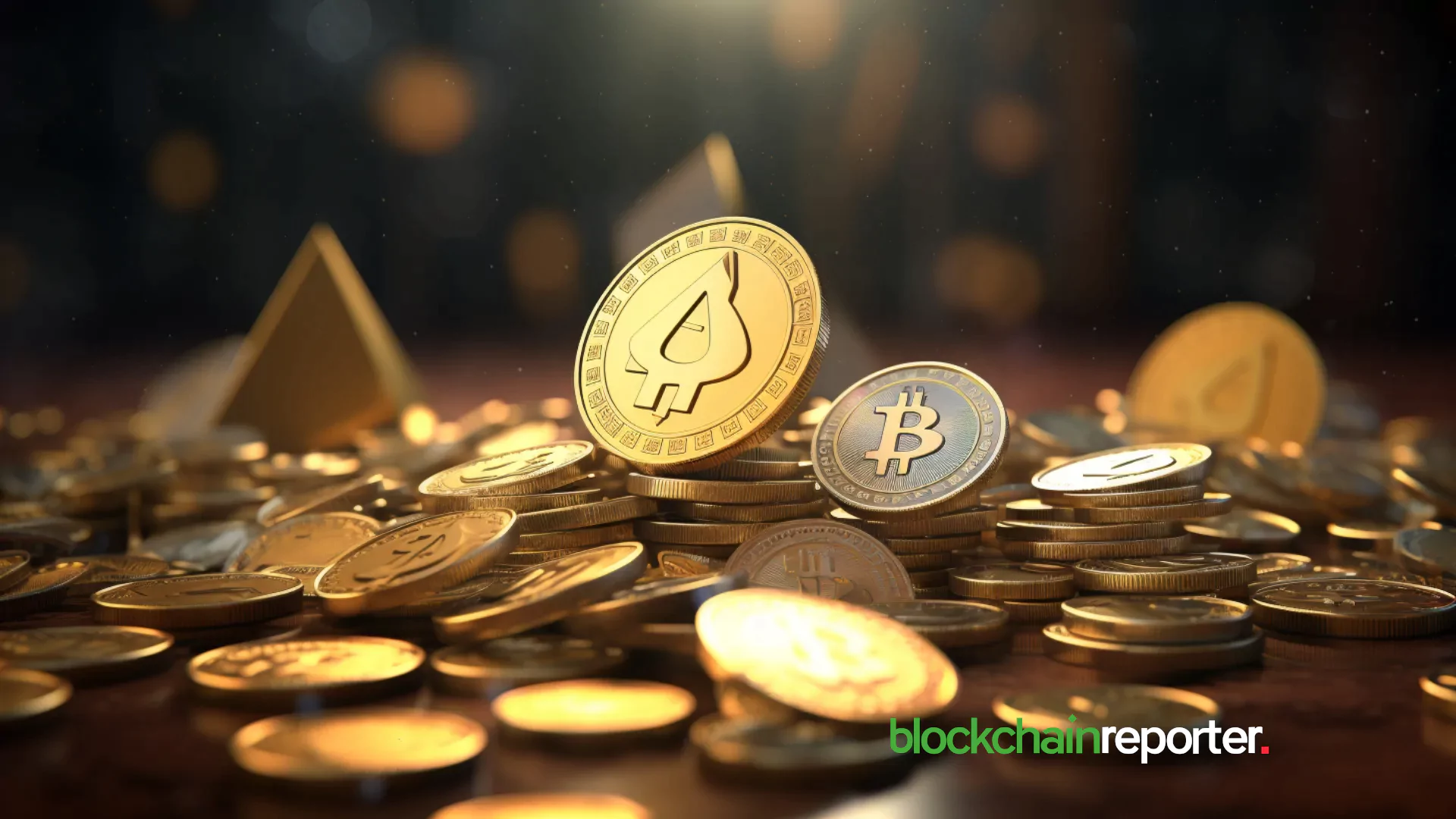
- 1. Introduction
- 1.1. Understanding Stablecoins
- 1.2. The Mechanisms Behind Stablecoins
- 1.3. Use Cases and Applications
- 1.4. Challenges and Criticisms
- 1.5. The Future Outlook
- 1.6. The Stablecoin Ecosystem and Market Dynamics
- 1.7. Stablecoins and the Global Economy
- 1.8. Risk Management in Stablecoin Operations
- 1.9. Ethical Considerations and Social Implications
- 1.10. Case Studies and Real-world Applications
- 1.11. Technological Innovations and Research Directions
- 1.12. Stablecoins vs. Other Cryptocurrencies
- 2. Conclusion
Introduction
In the digital epoch where technology and finance conflate to reinvent the wheel of economic interaction, stablecoins have emerged as a conspicuous player, curating a unique space that endeavors to amalgamate the best of both the fiat and cryptocurrency worlds. Embedded in the vast, dynamic universe of decentralized finance (DeFi), stablecoins aspire to juxtapose the decentralized, borderless, and frictionless nature of cryptocurrencies with the stability and reliability that is emblematic of traditional fiat currencies.
The ensuing discourse seeks to delve into the multifaceted realm of stablecoins, exploring their intrinsic mechanisms, exploring their operational modus operandi, dissecting their potential and actualized use cases, and scrutinizing the challenges and ethical dilemmas they present. Through a holistic lens, we shall traverse through varied thematic terrains, from the technical underpinnings and global impact to nuanced discussions on market dynamics, risk management, and ethical conundrums, thereby attempting to offer a panoramic view of the stablecoin ecosystem.
Understanding Stablecoins
- 1.1 Definition and Core Concept Stablecoins are digital currencies pegged to a stable asset, such as fiat currency or a commodity (e.g., gold), aiming to mitigate the notorious volatility typically associated with cryptocurrencies like Bitcoin and Ethereum.
- 1.2 Characteristics
- Stability: By anchoring its value to other stable assets, stablecoins endeavor to maintain a consistent price.
- Scalability: Given their stability, they facilitate scalable transactions in both crypto and mainstream markets.
- Security: Utilizing blockchain technology, stablecoins ensure secure and transparent transactions.
- Interoperability: Often, stablecoins serve as a bridge between traditional fiat currencies and volatile cryptocurrencies.
- 1.3 Types of Stablecoins
- Fiat-Collateralized: Pegged to fiat currencies like USD, EUR, or GBP. (e.g., USDT, USDC)
- Crypto-Collateralized: Backed by other cryptocurrencies, typically in a decentralized manner. (e.g., DAI)
- Commodity-Collateralized: Pegged to tangible assets like gold or silver. (e.g., PAXG)
- Algorithmic: Utilize algorithms and smart contracts to maintain stability. (e.g., Ampleforth)
The Mechanisms Behind Stablecoins
- Issuance and Redemption Stablecoins are issued and redeemed through various mechanisms that rely heavily on trust and regular audits to ensure that the backing assets accurately represent the circulating supply.
- Stabilization Mechanisms Stablecoins employ specific stabilization mechanisms, like over-collateralization or algorithmic adjustments, to secure their peg and counteract market fluctuations.
- Regulatory Compliance Different stablecoins adopt distinct approaches towards regulatory compliance, often dependent on their geographical jurisdiction and operational model.
Use Cases and Applications
- Payment Systems Facilitating cross-border transactions and daily payments with minimized price fluctuation risks.
- Remittances Enabling swift and cost-effective international remittances, especially in regions with limited banking infrastructure.
- Decentralized Finance (DeFi) Serving as collateral, stablecoins play a pivotal role in the burgeoning DeFi sector by providing liquidity and stability.
- Asset Tokenization Allowing for the creation of tokenized assets that are tied to real-world commodities, enhancing liquidity and transferability.
Challenges and Criticisms
- Security Concerns Despite their purported safety, stablecoins are not immune to vulnerabilities, such as smart contract bugs or exchange hacks.
- Regulatory Scrutiny As stablecoins grow in popularity, they are subjected to increased regulatory scrutiny due to concerns regarding monetary policy interference and financial stability.
- Collateral Management Managing collateral efficiently, particularly for collateralized stablecoins, entails challenges in terms of transparency, security, and regulatory compliance.
The Future Outlook
- Regulatory Developments Ongoing and future regulatory frameworks will likely sculpt the evolution and adoption trajectory of stablecoins.
- Technological Advancements Progress in blockchain technology and smart contracts will influence the development, utility, and security of stablecoins.
- Mass Adoption Considerations on how stablecoins may weave into the mainstream financial fabric, influencing global economies and payment systems.
- Central Bank Digital Currencies (CBDCs) The emergence of CBDCs may interact synergistically or competitively with stablecoins, shaping the future digital currency landscape.
The Stablecoin Ecosystem and Market Dynamics
- Market Size and Growth Exploring the growth trajectory of the stablecoin market, reflecting on its capitalization, and user adoption trends over the years.
- Dominant Players Investigating the prevailing stablecoins in the market, such as USDT, USDC, and DAI, and analyzing their market penetration and influence.
- Market Stability and Volatility Understanding how the stablecoin market responds to global economic shifts, cryptocurrency market fluctuations, and regulatory changes.
Stablecoins and the Global Economy
- Impact on Traditional Finance Analyzing the interaction between stablecoins and traditional financial institutions, and how the former might be integrated or resisted by the latter.
- Influence on Emerging Economies Scrutinizing the role of stablecoins in providing financial access and economic stability in developing regions and their potential to drive financial inclusion.
- Stablecoins in Economic Crises Evaluating the potential of stablecoins to act as a safe haven or a destabilizing force during economic downturns and crises.
Risk Management in Stablecoin Operations
- Managing Financial Risks Identifying and mitigating financial risks such as liquidity crunches, market collapses, and fluctuations in the collateral value.
- Legal and Compliance Risks Addressing the potential legal pitfalls and ensuring compliance with an ever-evolving regulatory landscape across different jurisdictions.
- Operational Risks Detailing strategies to manage operational challenges, including technological hiccups, security breaches, and procedural failures.
Ethical Considerations and Social Implications
- Privacy and Surveillance Examining the dichotomy between financial privacy and the need for regulatory oversight in preventing illicit activities.
- Financial Equality Considering the potential for stablecoins to either bridge or widen economic disparities within and between nations.
- Environmental Impact Evaluating the energy consumption and environmental footprint associated with stablecoin mining, transactions, and management.
Case Studies and Real-world Applications
- Venezuela Exploring how stablecoins like USDT have been utilized in Venezuela to navigate through hyperinflation and economic challenges.
- DeFi Lending Platforms Analyzing the use of stablecoins on DeFi lending platforms and how they have enabled users to earn yield on their assets.
- Cross-border Trade Investigating the application of stablecoins in facilitating international trade by minimizing currency conversion fees and transaction times.
Technological Innovations and Research Directions
- Research in Stablecoin Technology Highlighting ongoing research endeavors in enhancing stablecoin technology, including security, scalability, and interoperability.
- Innovations in Pegging Mechanisms Showcasing recent innovations in the mechanisms used to peg stablecoins and ensure their stability.
- Future Research Trajectories Identifying prospective research directions that could enhance the stability, adoption, and utility of stablecoins in the financial ecosystem.
Stablecoins vs. Other Cryptocurrencies
- Comparative Analysis Contrasting stablecoins against other cryptocurrencies in aspects like volatility, use cases, and regulatory treatment.
- Investment Perspectives Discussing stablecoins as an investment, considering their safety and yield in comparison to other cryptocurrencies and traditional investment avenues.
- Integration Challenges Investigating the challenges faced in integrating stablecoins within platforms and systems predominantly using other cryptocurrencies.
Conclusion
Navigating through the labyrinthine landscape of stablecoins, we witness a symphony of technological innovation, financial theory, and regulatory frameworks, all coalescing to sculpt a narrative that is both revolutionary and cautionary. Stablecoins, while emblematic of stability and potential harbingers of a new financial paradigm, are concurrently entwined with a multitude of challenges, criticisms, and existential questions that demand thorough scrutiny and deliberate action from stakeholders across the spectrum. Whether it’s understanding their impact on global economies, dissecting their role in the burgeoning DeFi sector, unraveling their technological nuances, or demystifying their market dynamics, stablecoins stand at the conflux of myriad paths, each leading towards diverse future possibilities and realities.
The journey forward for stablecoins is likely to be sculpted by a melange of factors, including technological advancements, regulatory insights, ethical considerations, and real-world applicabilities and challenges. It necessitates an integrative approach, where technologists, policymakers, economists, and ethical theorists converge to navigate through the complexities, ensuring that the evolution of stablecoins is sculpted with sagacity, foresight, and a keen understanding of its broader implications on society and the global financial ecosystem. Thus, as we gaze into the horizon, the dialogue around stablecoins continues, evolving with every technological stride, regulatory framework, and ethical discussion, each thread weaving into the intricate, dynamic tapestry of the future financial matrix.
Frequently Asked Questions
What is a stablecoin?
A stablecoin is a type of cryptocurrency designed to maintain a stable value by pegging it to a reserve asset, such as a fiat currency like the U.S. dollar or a commodity like gold. This stability aims to reduce the volatility commonly associated with cryptocurrencies like Bitcoin and Ethereum, making stablecoins more suitable for everyday transactions and as a store of value.
Are stablecoins safe to use?
While stablecoins offer price stability, their safety depends on the underlying mechanisms and the transparency of the reserves backing them. It's essential to use stablecoins from reputable issuers and to be aware of the regulatory environment, as the lack of regulation can pose risks.
How are stablecoins regulated?
The regulatory landscape for stablecoins varies by jurisdiction. In some regions, stablecoins are subject to financial regulations, while in others, they operate in a more ambiguous legal environment. Regulatory bodies are increasingly focusing on stablecoins to ensure consumer protection and financial stability.









